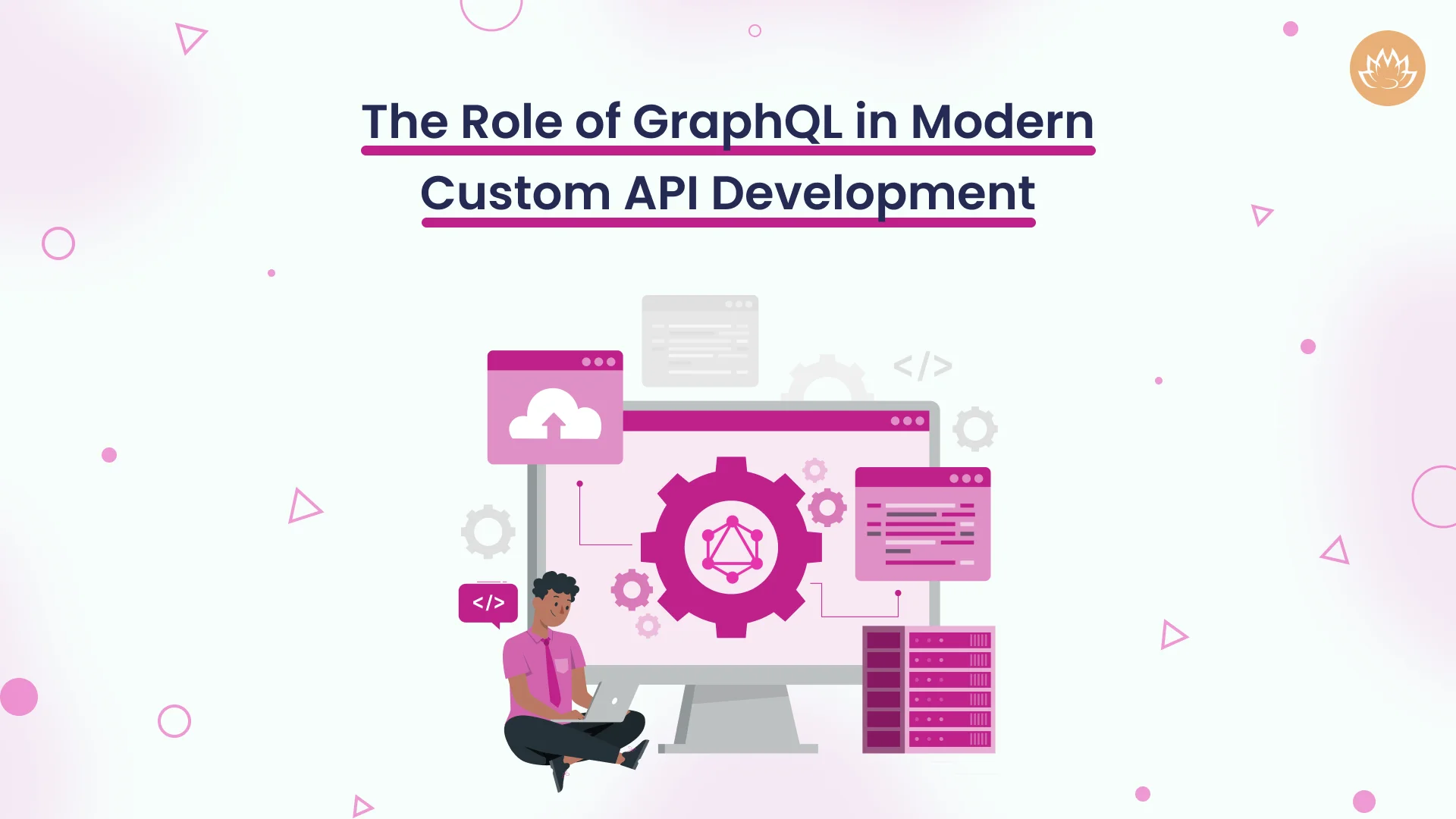In the last two years, GraphQL has gained a lot of exposure among most of the developers. GraphQL is a query language for APIs and provides a large pool of resources. Some developers are excited about its performance around the software development technology and are sure that REST APIs in many application architectures will soon be replaced over the next few years with GraphQL.
Categorically, GraphQL is preferred more for React Native projects. This is because the apps that are created in React Native can communicate with the backend APIs and with GraphQL, React Native developers find it easier to fetch the specific data with lesser coding. They can avoid hitting multiple endpoints to get the desired data.
Moreover, GraphQL has proven its worth by accomplishing crucial projects and building reliable products and services. It has created a robust ecosystem that delivers stealthy results helping businesses gain traction in the market. So why not explore more about GraphQL as it is the future of APIs and is rapidly boosting the efficiencies of so many developers?
The blog introduces you to the basics of GraphQL and how it is influencing the market of APIs with its outstanding components and available resources.
What is GraphQL?
Developed by Facebook originally in 2012 to address their market problems, GraphQL is an open-source query language. Clients can request and receive data they need through a service. With GraphQL, clients get the power to write data specifications and obtain customized responses. GraphQL has control over data and keeps the server independent. It comes back with predictable results making APIs fast, flexible, and more developer-friendly.
How GraphQL Functions?
GraphQL has three main components – schema, resolvers, and query language.
Schema
Schema has object types that are requestable with relevant fields. It defines various types present in the API and identifies the interconnection between them. It is similar to making a contract between a client and a service provider. GraphQL will provide data specifications as per the request and will derive the relationship with other data. Schema is written in GraphQL with Schema Definition Language.
Resolvers
Resolver is the function held responsible for fetching data fieldwise as requested in a query. Resolvers implement the job of resolving the data from diverse sets of data resources such as services, databases, and other APIs.
Query Language
Clients can express their data needs and requirements with Query language in GraphQL. These queries are then sent to the server and get further processed by executing the resolvers. The server responds with a JSON object that contains the exact kind of data that is requested by the client.
Apart from the above functions, GraphQL sometimes also performs most generic operations such as Queries and Mutations. These operations are actively practiced through a CRUD (create, read, update, and delete) model wherein the Query is equal to Reading and Mutations is equal to Create, Update, and Delete.
Advantages of GraphQL
As a developer or a businessman, if you are just thinking of using GraphQL for your enterprise environment, some valid reasons sound positive to move ahead:
- Provides a single flexible endpoint giving access to the entire data graph, simplifying API designs, evolving into an API that does not break existing clients and maintains compatibility.
- Clients can request any type of data they need, reducing network traffic and enhancing performance.
- GraphQL calls get managed in a single round trip with clients getting their desired requests without over-fetching or under-fetching.
- Data types are well-defined enabling seamless communication between client and server
- Auto-generates documents due to its introspective feature of giving clients the liberty to request their list of data types.
- Resolves an application API without hampering or disturbing existing queries
- All those features not available with REST API are accessible in open-source GraphQL extensions.
- Helps clients to define the structure and shape of the response and build personalized user interfaces.
- Any application architecture can be introduced even if there exists REST API and is adjustable with the available APIs.
GraphQL Best Practices
The section will help you to address certain critical issues that APIs may have to face regarding network, pagination, and authorization. GraphQL has solutions to all such issues even if their solutions are not described anywhere. Below are the best practices that can be considered as tactical suggestions to resolve some recurring issues like:
HTTP
REST APIs need URL sets showing a single resource. GraphQL specifically serves over HTTP with a single endpoint providing a complete set of service capabilities. GraphQL can be used side by side with the URL sets.
JSON GZIP
JSON GZIP is not in the GraphQL specifications. However, with GraphQL it can respond well, as it has a familiar framework for API developers and clients. The framework is easily readable and debuggable.
Versioning
GraphQL does not perform versioning, It provides resilient tools that can continuously update or transform GraphQL schema. In REST API, from the API endpoint, data will have limited control and all the changes will be made in a new version. Hence, API interpretation and maintainability become a challenge due to constantly adding new features and new releases of versions. GraphQL returns requested data and does not break the changes into different versions, thereby adding new types and fields to the existing API version.
Nullability
GraphQL type system has nullable fields. When databases and services support the network, there may be a database crash or failure of an asynchronous action. When there are nullable fields by default, the fields would return ‘null’ and will not request failing with given reasons. Whereas, in GraphQL, the client can raise the request for a non-null field. In this scenario, the request will not return as null and will set the parent field to ‘null’ in case any errors happen.
Server-side batching and caching
With GraphQL, you can write clean, separate, and efficient codes on the server side by specifying each field and each type. In case the server is not familiar with using GraphQL, it might request for same information multiple times thereby slowing things down and wasting resources. In such a scenario, you can perform the batching technique, by grouping similar jobs and doing them together at once.
GraphQL vs REST API
Handling Resources
GraphQL provides a separate description of each type of data the client requests. With ‘schema’, it explains various types of data and can send a request of your desired data along with specifications by using Query type. So the main difference here is GraphQL helps in describing all that you want and helps you easily fetch data.
REST API treats everything like a resource with a unique URL. For fetching specific data, it needs a “GET” request to the URL. The data is fetched in JSON format linking the type of data with the URL as the unique ID for that particular data.
API Structure
GraphQL applies ‘schema’ and does not rely on URLs. The schema will define the available types and entry points for retrieving data and for modifying it. With Query and Mutations, it will get aligned with REST endpoints. By using this technique, GraphQL will differentiate between read and write operations instead of changing HTTP operations.
Developers must know the endpoints and estimated response structure for performing efficient consumption. For this, API predictability has a crucial role to play. REST APIs present endpoints as a linear list and determine the appropriate endpoint initially for fetching and saving data.
Code Execution
In the case of GraphQL, it implements API functionality by using resolvers. The resolvers take the query and will retrieve the requested data with a response that is shaped exactly according to the query. Hence, GraphQL is empowered to execute multiple resolvers in a single request enabling fast retrieval of nested data.
REST and GraphQL both execute code on the server for processing API requests. However, REST matches the HTTP verb and URL path through a route handler with a registered function. Once the function gets executed, it returns the result that is serialized and has specific response codes and headers that are sent to the client.
Documentation
REST Architecture faces a challenge when it comes to maintaining and understanding while it grows with time. GraphQL has the best documentation system that is strongly typed and is equipped with full knowledge about the type of data. It helps you see and put queries for fetching data easily.
Conclusion
Author

Sunil is a result-orientated Chief Technology Officer with over a decade of deep technical experience delivering solutions to startups, entrepreneurs, and enterprises across the globe. Have led large-scale projects in mobile and web applications using technologies such as React Native, Flutter, Laravel, MEAN and MERN stack development.
View all posts









